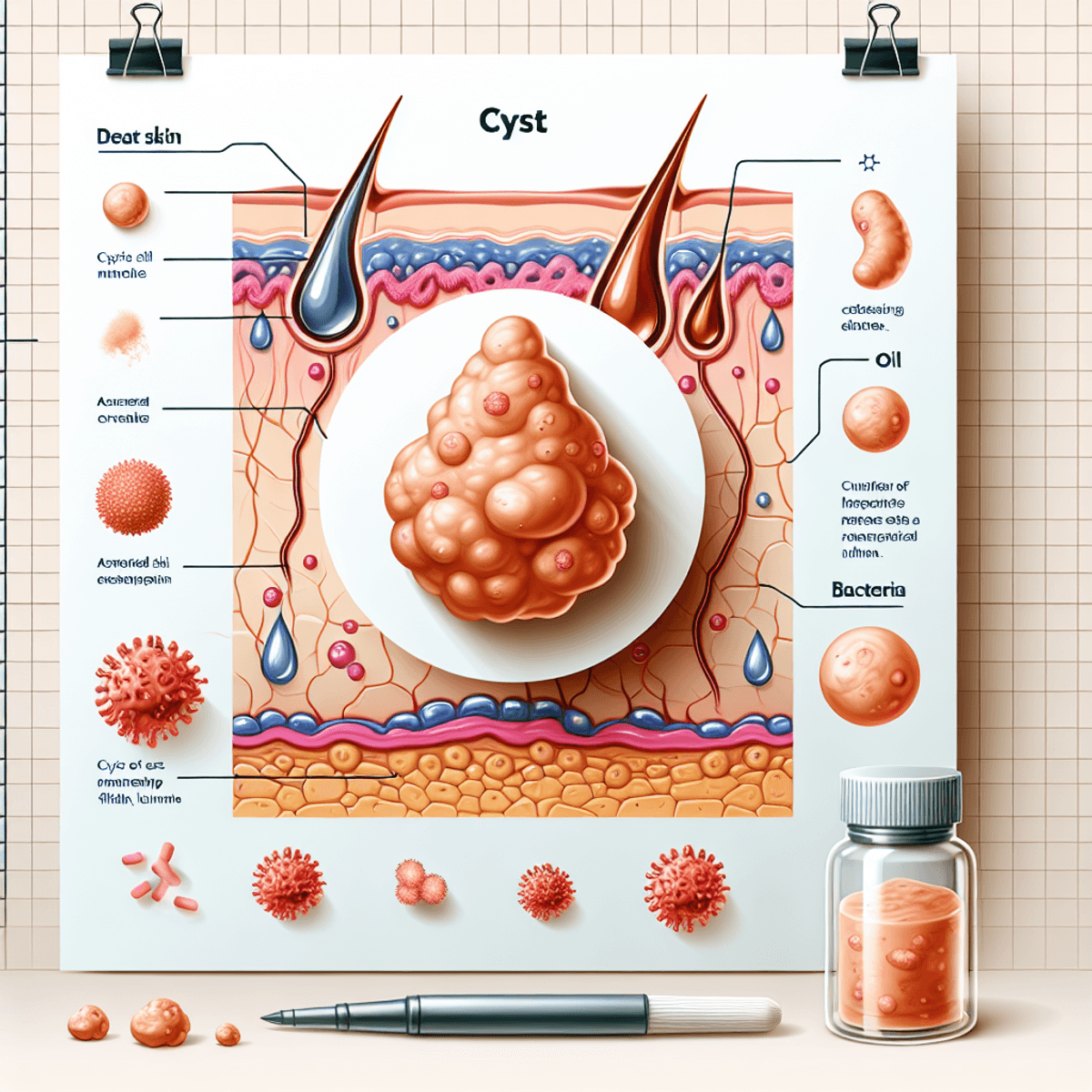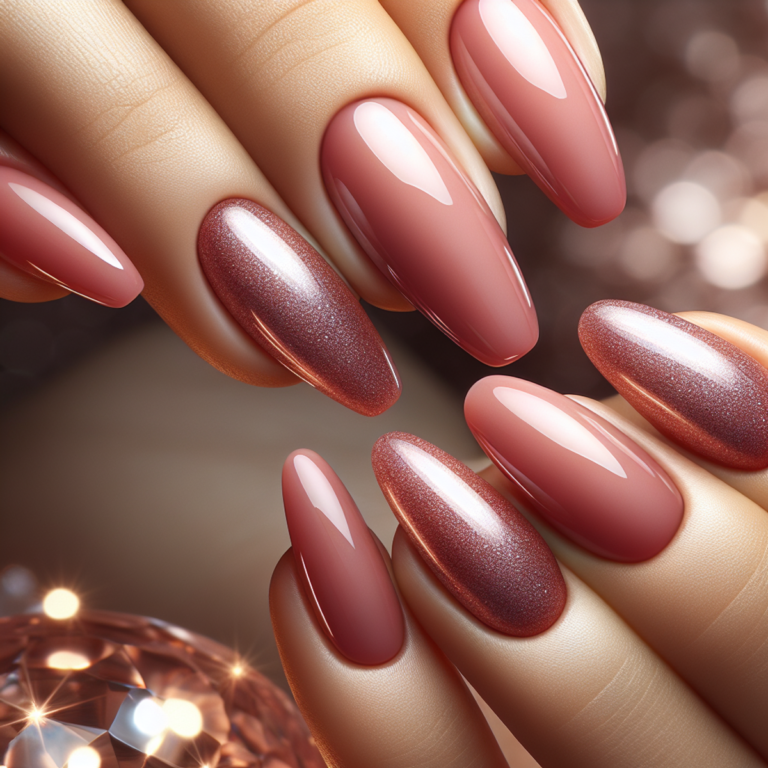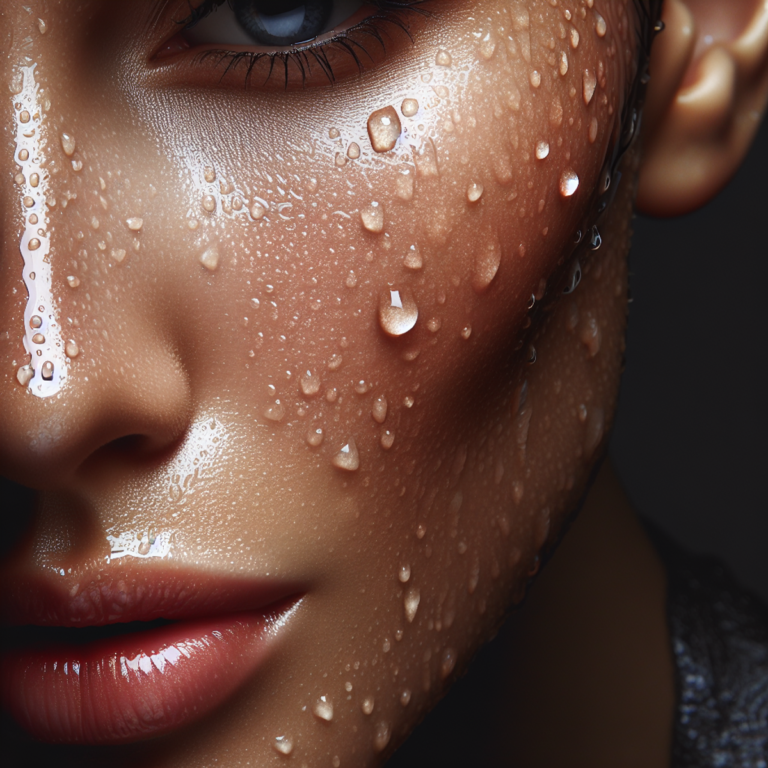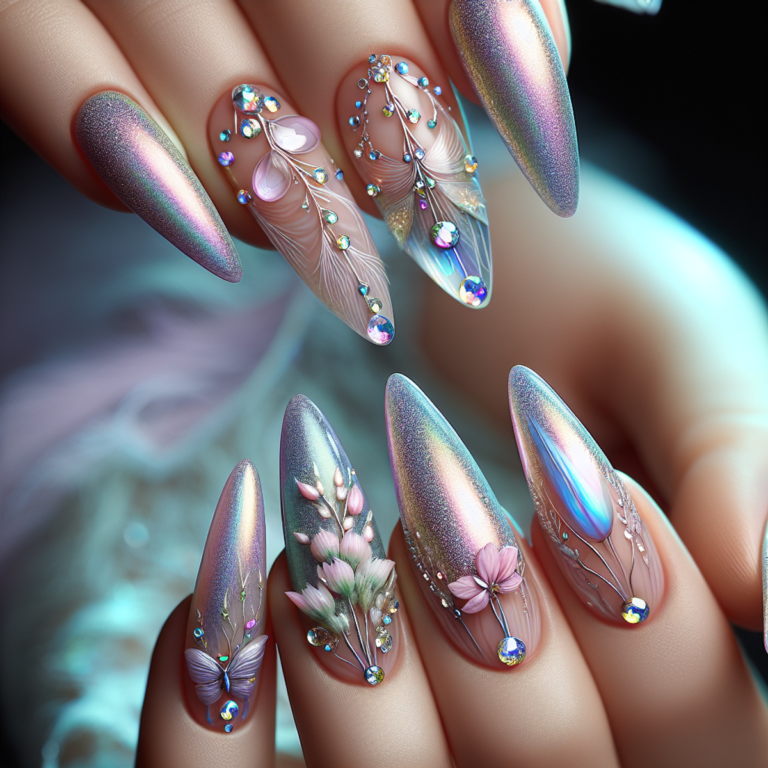Cystic Acne: How to Treat and Prevent Breakouts

Introduction
Living with cystic acne can feel like an endless battle against your own skin. These painful, deep-rooted bumps don’t just affect your appearance – they can impact your self-confidence and daily life in profound ways.
Cystic acne is the most severe form of acne, characterized by large, inflamed cysts that develop deep beneath the skin’s surface. Unlike common pimples, these stubborn blemishes can persist for weeks or months, leaving behind lasting scars without proper treatment.
In this comprehensive guide, you’ll discover essential information about cystic acne:
- The root causes and triggers of cystic breakouts
- Professional treatment options that actually work
- Proven prevention strategies to reduce future flare-ups
- Effective methods for managing acne scars
- Natural remedies and lifestyle changes that support healing
Whether you’re dealing with occasional cystic breakouts or persistent severe acne, understanding the right approach to treatment makes a significant difference. This guide combines medical research, dermatologist recommendations, and practical solutions to help you take control of your skin health.
Ready to transform your skin care journey? Let’s dive into the science behind cystic acne and explore the most effective ways to achieve clearer, healthier skin.
Understanding Cystic Acne
Cystic acne is the most severe form of acne, different from common breakouts. These painful, fluid-filled lumps form deep within the dermis layer of your skin, resulting in large, red bumps that can last for weeks or months. Unlike regular pimples that are on the surface, cystic acne occurs when bacteria, dead skin cells, and oil get trapped beneath the skin’s surface, causing inflammation.
Key Characteristics of Cystic Acne:
- Deep-seated, painful nodules larger than 5mm
- Redness and inflammation around the affected area
- Potential fluid or pus build-up beneath the skin
- Risk of permanent scarring
- Resistance to typical over-the-counter treatments
Your hormones play a crucial role in the development of cystic acne. Androgens, especially testosterone, stimulate the oil glands in your skin to produce excess sebum. This hormonal influence explains why you may experience breakouts during certain stages of life:
Hormonal Triggers:
- Puberty: Rising androgen levels
- Menstruation: Monthly hormonal fluctuations
- Pregnancy: Dramatic hormone changes
- Menopause: Hormonal imbalances
- PCOS: Elevated androgen production
The formation of cystic acne starts in your pores. When there is too much oil combined with dead skin cells, it creates a perfect environment for P. acnes bacteria to thrive. This process sets off a series of events:
- The pore gets clogged with oil and dead cells
- Bacteria multiply in the oxygen-free environment
- Your immune system responds with inflammation
- A deep, painful cyst forms beneath the skin
What makes cystic acne different from other types of acne is the presence of bacterial infection. The existence of bacteria leads to increased inflammation and pus formation, making these lesions particularly difficult to treat. Since the infection occurs deep within the skin, surface-level treatments often prove ineffective and require targeted interventions that can penetrate deeply.
When dealing with cystic acne, your skin’s natural healing process can be disrupted. The depth and severity of these lesions mean they are more likely to leave lasting marks or scars, especially if you try to squeeze or pick at them.
Causes and Triggers of Cystic Acne
Cystic acne develops through a complex interplay of various factors that can trigger or worsen breakouts. Understanding these triggers helps create effective prevention strategies.
Hormonal Conditions
PCOS (Polycystic Ovary Syndrome) stands as a significant contributor to cystic acne development. This condition causes:
- Increased androgen production
- Irregular hormone levels
- Insulin resistance
- Enhanced sebum production
Lifestyle and Environmental Triggers
Stress Impact
- Elevated cortisol levels stimulate oil glands
- Decreased immune system function
- Slower wound healing
- Increased inflammation response
Medication-Related Factors
- Certain birth control methods
- Steroid medications
- Testosterone supplements
- Lithium-based medications
Environmental Elements
- High humidity levels trap sweat against skin
- Tight clothing creates friction and heat
- Heavy makeup products block pores
- Excessive sun exposure
- Air pollution particles
Dietary Influences
High-Risk Foods
- Dairy products, particularly skim milk
- High glycemic index foods
- Processed sugars
- Refined carbohydrates
Nutritional Deficiencies
- Lack of zinc
- Insufficient vitamin D
- Low omega-3 fatty acids
- Inadequate vitamin A levels
Physical Factors
These factors contribute to the development of cystic acne:
- Excessive touching of face
- Using dirty phone screens
- Unwashed pillowcases
- Sweaty workout equipment
- Hair products that contact skin
Genetic Predisposition
Family history plays a crucial role in cystic acne development. You’re more likely to experience severe breakouts if your parents had similar skin issues. Genetic factors influence:
- Skin cell turnover rate
- Sebum production levels
- Inflammatory response
- Hormone sensitivity
These triggers often work in combination, creating a perfect storm for cystic acne development. Identifying your specific triggers through careful observation and tracking helps create targeted treatment approaches.
Symptoms and Diagnosis
Cystic acne has specific features that make it different from regular breakouts. You’ll see large, painful bumps forming deep beneath your skin – these are the unmistakable signs of cystic acne.
Key Symptoms:
- Red, tender lumps beneath the skin
- Pus-filled nodules larger than typical pimples (5-10mm)
- Painful to touch
- Clusters of inflammatory lesions
- Persistent bumps that don’t come to a head
- Spots that last several weeks or months
- Warmth around affected areas
These cystic lesions commonly appear on:
- Face (especially jawline and chin)
- Chest
- Back
- Shoulders
- Upper arms
The Diagnosis Process
A dermatologist will examine your skin and assess several factors to confirm cystic acne, which is a severe form of acne:
- Physical ExaminationDepth and size of lesions
- Distribution patterns
- Presence of scarring
- Skin type assessment
- Medical History ReviewFamily history of acne
- Menstrual cycles (for women)
- Current medications
- Previous treatments
- Lifestyle factors
- Additional TestsHormone level testing
- Blood work (if PCOS is suspected)
- Bacterial culture (in resistant cases)
The severity of cystic acne ranges from mild (few lesions) to severe (multiple inflammatory cysts). Your dermatologist will grade the condition on a scale to determine appropriate treatment options. This grading system considers:
- Number of inflammatory lesions
- Presence of scarring
- Impact on daily life
- Emotional distress levels
- Treatment resistance
A proper diagnosis helps create an effective, personalized treatment plan targeting your specific symptoms and triggers. For more information about this condition, you can refer to resources such as Medscape or Cleveland Clinic.
Treatment Options for Cystic Acne
Treating cystic acne requires a comprehensive approach tailored to your specific skin condition and severity. Professional medical intervention plays a crucial role in managing these deep, painful breakouts effectively.
1. Medical Treatments for Cystic Acne
Oral Antibiotics
- Tetracycline-class medications (doxycycline, minocycline)
- Erythromycin for patients unable to take tetracyclines
- Treatment duration: 3-6 months for optimal results
- Prescribed alongside topical treatments for enhanced effectiveness
Oral antibiotics work by:
- Reducing inflammation in deep skin layers
- Controlling P. acnes bacteria population
- Decreasing oil production
- Preventing new cyst formation
Topical Retinoids
These vitamin A derivatives revolutionize skin cell turnover and are available in different strengths:
- Tretinoin (0.025%, 0.05%, 0.1%)
- Adapalene (0.1%, 0.3%)
- Tazarotene (0.05%, 0.1%)
Benefits of topical retinoids include:
- Accelerated skin cell regeneration
- Reduced pore blockage
- Prevention of new cyst formation
- Improved penetration of other topical medications
Application Tips for Topical Treatments
- Start with lower concentrations
- Apply a pea-sized amount to clean, dry skin
- Use every other night initially
- Gradually increase frequency as tolerance builds
- Always pair with broad-spectrum sunscreen during daytime
Combination Therapy
Your dermatologist might prescribe multiple treatments:
- Oral antibiotics + topical retinoids
- Benzoyl peroxide + topical antibiotics
- Birth control pills + topical treatments (for hormonal cases)
This multi-targeted approach addresses:
- Active inflammation
- Bacterial overgrowth
- Excess oil production
- Irregular cell turnover
Expected Timeline
- Initial improvement: 4-8 weeks
- Significant clearing: 3-4 months
2. Other Medical Treatments for Cystic Acne
Benzoyl Peroxide Treatment
Benzoyl peroxide serves as a powerful antibacterial agent in the fight against cystic acne. This treatment works by:
- Killing acne-causing bacteria beneath the skin
- Reducing inflammation of existing cysts
- Preventing new cystic breakouts
- Drying excess oil production
You’ll find benzoyl peroxide in various concentrations, ranging from 2.5% to 10%. Start with a lower concentration to minimize potential skin irritation. Apply a thin layer to affected areas after cleansing, and remember to use sunscreen as this treatment can increase sun sensitivity.
Isotretinoin for Severe Cases
Isotretinoin represents a significant breakthrough in treating severe cystic acne. This prescription medication targets multiple factors that contribute to acne formation:
- Shrinks oil glands
- Reduces excessive oil production
- Kills acne-causing bacteria
- Decreases inflammation
- Normalizes skin cell turnover
The typical treatment course runs 4-6 months, with potential side effects requiring careful monitoring:
- Dry skin and lips
- Sensitivity to sun
- Changes in blood work
- Birth defects if taken during pregnancy
Your dermatologist will conduct regular check-ups and blood tests during isotretinoin treatment. This medication requires enrollment in a monitoring program due to its potential risks.
Dosage Considerations
Isotretinoin dosing depends on:
- Your body weight
- Severity of acne
- Response to previous treatments
- Presence of other medical conditions
The medication typically starts at a lower dose, with adjustments made based on your response and tolerance. Some patients achieve complete clearance with a single course, while others might need additional treatments.
3. Corticosteroid Injections for Cystic Acne Treatment
Corticosteroid injections offer a rapid solution for painful, inflamed cystic acne lesions. This medical procedure involves injecting a diluted corticosteroid directly into the cyst using a thin needle.
The results can be dramatic:
- Reduced inflammation within 24-48 hours
- Decreased pain and tenderness
- Visible shrinking of the cyst
- Minimal scarring risk
Your dermatologist will determine the appropriate dosage based on:
- Size of the cyst
- Location on your body
- Previous treatment responses
- Skin sensitivity
Treatment Protocol:
- Skin cleansing and sterilization
- Precise injection into the cyst
- Application of antiseptic ointment
- Post-treatment care instructions
While corticosteroid injections work quickly, they’re reserved for specific situations:
- Large, painful cysts
- Special events requiring fast results
- Cases resistant to other treatments
- Emergency breakout management
Important Considerations:
- Limited to 3-4 injections per visit
- Minimum 6-week intervals between treatments
- Temporary skin depression possible
- Not suitable for widespread breakouts
This targeted approach works best as part of a comprehensive treatment plan, combining both immediate relief and long-term management strategies.
At-home Remedies for Cystic Acne Treatment
A gentle, consistent skincare routine forms the foundation of effective at-home cystic acne management. Start with a mild, non-comedogenic cleanser twice daily – avoid harsh scrubbing that can irritate active breakouts. Pat your skin dry with a clean towel and apply treatments while your skin is slightly damp.
Natural anti-inflammatory ingredients
Natural anti-inflammatory ingredients can help reduce redness and swelling:
- Tea tree oil (diluted to 5% strength) acts as a natural antimicrobial
- Green tea extract provides antioxidant benefits
- Aloe vera gel soothes irritated skin
- Raw honey offers antibacterial properties
Essential skincare habits:
Essential skincare habits:
- Change pillowcases every 2-3 days
- Keep hair clean and away from face
- Avoid touching face throughout the day
- Use clean towels for face-drying
- Remove makeup completely before bed
DIY spot treatments
DIY spot treatments can provide temporary relief:
- Ice wrapped in cloth (10-second intervals)
- Warm compress to bring deep cysts to surface
- Apple cider vinegar (diluted) as astringent
- Turmeric paste for inflammation
Lifestyle adjustments
Lifestyle adjustments support skin healing:
- Stay hydrated with 8+ glasses of water daily
- Get 7-8 hours of sleep
- Manage stress through meditation/exercise
- Wear breathable fabrics
- Keep skin protected from sun exposure
Important note: While these remedies can help manage mild symptoms, severe cystic acne requires professional medical treatment. Stop using any home remedy that causes irritation or worsening symptoms.
A balanced approach combining gentle cleansing, targeted spot treatments, and consistent skincare habits helps support your skin‘s natural healing process. Track your skin’s response to different remedies in a journal to identify what works best for your specific case.
Preventive Measures for Cystic Acne Management
A proactive approach to cystic acne management can significantly reduce the frequency and severity of breakouts. Creating a comprehensive prevention strategy involves both skincare habits and lifestyle modifications.
Essential Skincare Practices
- Use non-comedogenic products labeled “oil-free” or “won’t clog pores”
- Cleanse your face twice daily with a gentle, pH-balanced cleanser
- Apply sunscreen daily – sun exposure can worsen acne and cause scarring
- Change pillowcases 2-3 times per week to prevent bacterial buildup
- Remove makeup before bed using gentle, oil-free makeup removers
Smart Dietary Choices
Low glycemic foods help maintain stable blood sugar levels, reducing inflammation and sebum production. Include these foods in your diet:
- Leafy greens
- Whole grains
- Lean proteins
- Fresh fruits
- Nuts and seeds
Foods to Limit
- Refined carbohydrates
- Sugary snacks and beverages
- Dairy products
- Processed foods
- High-fat foods
Lifestyle Adjustments
- Stay hydrated with 8-10 glasses of water daily
- Get 7-9 hours of quality sleep each night
- Exercise regularly to promote healthy blood circulation
- Manage stress through meditation, yoga, or other relaxation techniques
- Avoid touching your face throughout the day
Environmental Considerations
- Keep hair clean and away from your face
- Clean phone screens and other objects that contact your skin
- Wear breathable fabrics
- Avoid excessive heat and humidity when possible
- Use clean towels and washcloths
Regular monitoring of your skin’s response to these preventive measures allows you to adjust your routine as needed. Track changes in your skin’s condition using a diary or smartphone app to identify patterns and triggers specific to your cystic acne.
Long-Term Strategies for Managing Cystic Acne Scars
Cystic acne often leaves behind lasting reminders in the form of scars, ranging from shallow depressions to deep, pitted marks. These scars develop when severe inflammation damages the skin’s collagen, creating permanent textural changes that require specialized treatment approaches. For more information on the types of scars that can result from acne, you can visit this resource.
Types of Cystic Acne Scars:
- Ice pick scars: Deep, narrow punctures
- Rolling scars: Wave-like depressions
- Boxcar scars: Angular depressions with sharp edges
- Hypertrophic scars: Raised, thickened tissue
Professional Treatment Options:
- Chemical PeelsGlycolic acid peels
- TCA peels
- Salicylic acid peels
- Results visible after 3-6 sessions
- Laser TherapyFractional laser resurfacing
- CO2 laser treatment
- Pulsed dye laser
- Targets both texture and discoloration
- Dermal FillersTemporary solution for deep scars
- Immediate results
- Requires maintenance every 6-12 months
These professional treatments are part of a broader strategy for managing cystic acne scars effectively. According to a study published in the National Institutes of Health, a combination of these treatments often yields the best results.
At-Home Scar Management:
- Retinol products stimulate collagen production
- Vitamin C serums fade dark marks
- Sunscreen prevents scar discoloration
- Silicone sheets or gels flatten raised scars
Natural Remedies:
- Rosehip oil application
- Aloe vera gel
- Raw honey masks
- Lemon juice spot treatment
The effectiveness of scar treatment depends on several factors, including scar age, depth, and skin type. Newer scars respond better to treatment than older ones. A combination of professional treatments and consistent home care typically yields the best results for significant scar improvement. For more insights into various treatment options available for acne scars, you can refer to this detailed guide.
Conclusion
Treating cystic acne requires a comprehensive approach that includes medical treatment, consistent skincare routines, and lifestyle changes. To achieve clear skin, it is important to understand the specific characteristics of your breakouts and collaborate with a dermatologist to create a personalized treatment plan.
Key takeaways for managing cystic acne:
- Early intervention prevents severe scarring and emotional distress
- Professional medical treatments offer the most effective solutions
- Consistent skincare routines support long-term skin health
- Lifestyle modifications help reduce breakout frequency
- Regular dermatologist check-ups ensure optimal treatment results
Remember that treating cystic acne takes time and dedication. While it may be tempting to seek quick fixes, lasting results come from faithfully following your prescribed treatment plan. Your skin deserves gentle care and expert attention, whether you’re dealing with facial breakouts, body acne, or post-inflammatory marks.
The journey to clear skin may have its ups and downs, but with the right combination of treatments, preventive measures, and scar management techniques, you can make significant progress in improving the appearance and health of your skin. Stay committed to your skincare journey, and be open to adjusting your approach as your skin’s needs evolve.
FAQs (Frequently Asked Questions)
What is cystic acne and how does it differ from other types of acne?
Cystic acne is a severe form of acne characterized by painful, deep-seated nodules or cysts beneath the skin. Unlike other types of acne, which may be superficial and less inflamed, cystic acne often involves clogged pores and bacterial infections leading to inflamed lesions.
What are the primary causes and triggers of cystic acne?
Cystic acne can be influenced by various factors including hormonal changes (such as those during puberty, menstruation, pregnancy, and menopause), lifestyle factors like stress and diet, and conditions like Polycystic Ovary Syndrome (PCOS). Environmental factors such as humidity and tight clothing can also exacerbate flare-ups.
How do dermatologists diagnose cystic acne?
Dermatologists diagnose cystic acne through a thorough examination of the skin along with a detailed medical history. They look for common symptoms associated with cystic acne, such as the presence of painful nodules or cysts.
What treatment options are available for managing cystic acne?
Treatment options for cystic acne include medical interventions such as oral antibiotics to reduce inflammation and control bacteria, topical retinoids to promote cell turnover, and benzoyl peroxide for targeting active lesions. In severe cases, isotretinoin may be prescribed. Additionally, corticosteroid injections can provide rapid relief from large cysts.
Are there effective home remedies for treating cystic acne?
While medical treatments are often more effective, some individuals may find relief using home remedies such as tea tree oil for its antibacterial properties or aloe vera for its soothing effects. However, it’s important to consult with a dermatologist before relying solely on home remedies.
Can lifestyle changes help in preventing cystic acne breakouts?
Yes, making certain lifestyle changes can help prevent cystic acne breakouts. This includes managing stress levels, maintaining a balanced diet low in refined sugars and dairy products, practicing good skincare hygiene, and avoiding tight clothing that can trap moisture against the skin.










